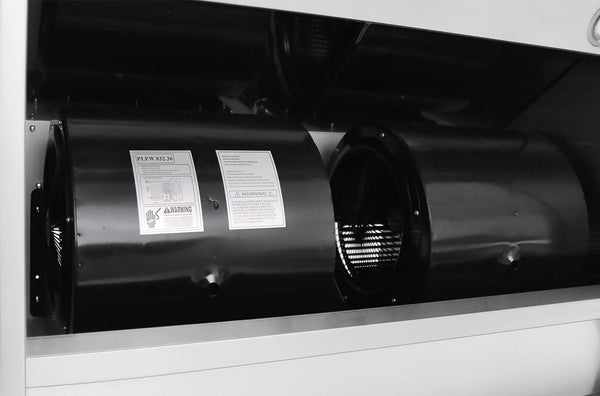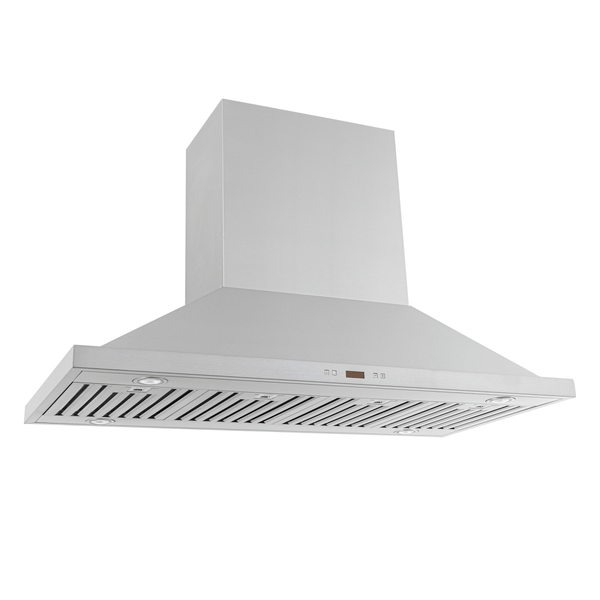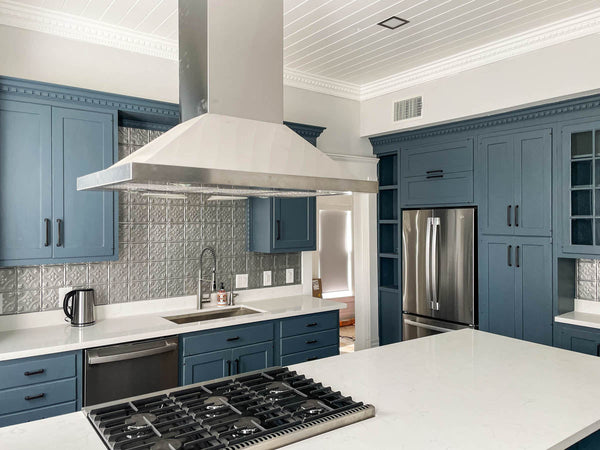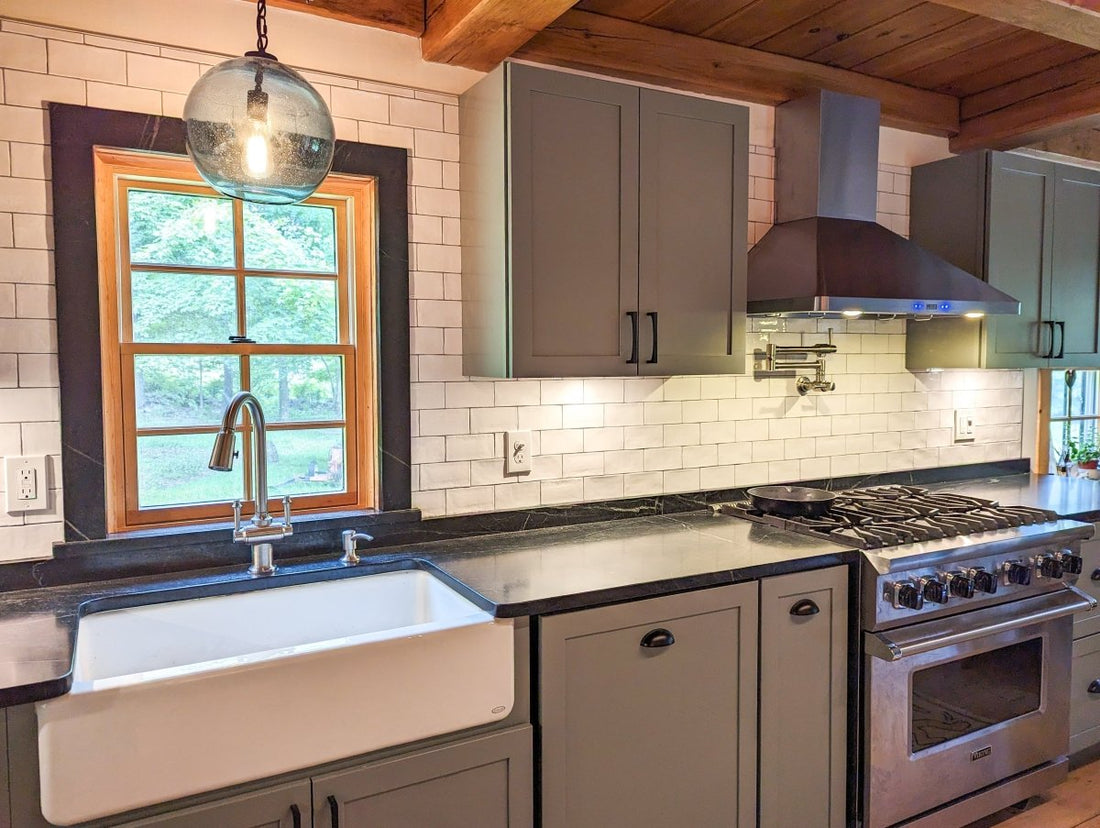Table of Contents
Why Proper Venting Is Critical
Are there requirements when it comes to kitchen ventilation? Short answer, yes!
Gas cooktops produce dangerous combustion byproducts including:
- Nitrogen dioxide (NO₂)
- Carbon monoxide (CO)
- Particulate matter that can accumulate indoors and cause respiratory problems
Studies show homes with unvented gas stoves have higher indoor NO₂ levels than outdoors, which can irritate lungs and worsen asthma.
Here at Proline we recommend installing a range hood that is vented outdoors over gas stoves to remove these pollutants at the source. Unfortunately opening windows or using recirculating fans isn't sufficient - direct exhaust to the outside is necessary for safety.
Sizing Guidelines
| Sizing Method | CFM Requirement | Best For |
|---|---|---|
| Basic Rule | 100 CFM per 10,000 BTU of cooktop output | Code compliance minimum |
| Expert Recommendation | 600+ CFM for most kitchens | Optimal performance & quiet operation |
Benefits of Higher CFM Rating
This higher CFM rating gives you the flexibility to:
- Run your hood at lower speeds during light cooking while still maintaining effective ventilation
- Have maximum power available for heavy cooking or high-heat searing when needed
Code Requirements
Many U.S. residential building codes—including those based on ASHRAE 62.2 and the International Residential Code (IRC)—recommend or require specific standards for gas cooktop ventilation.
Required specifications:
- Kitchen range hoods must be vented directly outdoors, not recirculating
- Minimum airflow capacity required is 100 CFM
- Maximum noise level of 3 sones at the required airflow
- All ductwork must use smooth metal materials like galvanized steel and aluminum
- Plastic or flexible ducting is not permitted
Make-up air requirements: For range hoods rated over 400 CFM, building codes typically require a make-up air system to maintain proper home pressurization.
While Proline doesn't sell these systems, your contractor or HVAC professional can help source and install one that works for your home.
Always check with your local building authority to ensure your setup meets current code requirements, as local codes can be more restrictive than national standards.
Installation Requirements
Mounting height: Your range hood should be mounted 28-36 inches above the cooktop surface.
- Installing too low (under 28 inches) can cause heat damage and create safety issues
- Mounting too high (over 36 inches) results in poor smoke capture efficiency
Hood size: The hood should be at least as wide as your cooktop, but ideally 3 inches wider on each side for optimal capture. This overhang helps contain cooking vapors before they spread into the kitchen.
Ductwork requirements: Ductwork must use smooth metal ducts with a backdraft damper to prevent outside air from entering when the hood isn't running. Each hood requires dedicated ductwork and cannot share ducting with other exhaust systems like bathroom fans or clothes dryers.
Ducted vs. Ductless
Ducted Systems (Required for Gas Cooktops)
- Remove all combustion gases from your home
- Offer higher CFM capacity
- Meet building code requirements
- Provide better safety for gas cooking
Ductless/Recirculating Systems (Not Recommended for Gas Cooktops)
- Don't remove combustion gases like NO₂ and CO
- Fail to meet building codes for gas cooktops
- Only allowed as exceptions in retrofit situations where ducting isn't possible
- Require frequent carbon filter replacement
- Don't provide adequate protection from gas combustion byproducts
Performance Tips
Maximize capture efficiency:
- Ensure proper overhang of at least 6 inches past the cooktop edges
- Hood should have adequate depth to cover the front burners completely
- Avoid placing the hood where cross-drafts from HVAC vents or windows can interfere with smoke capture
Regular maintenance: Clean grease filters monthly to maintain proper airflow. Dirty filters restrict airflow and reduce the hood's effectiveness while also creating a fire hazard.
Island cooktops: Present special challenges since they lack wall support for smoke capture. These installations typically need larger hoods or higher CFM ratings to compensate for the lack of surrounding walls to help contain cooking vapors.
Bottom Line
For safe gas cooktop venting:
- Size properly: Minimum of 100 CFM per 10,000 BTU but aim for 600+ CFM for optimal performance
- Install correctly: Proper height (28-36 inches), adequate overhang, and metal ductwork venting to the outdoors
- Choose quality equipment: Operates quietly to encourage daily use (a hood that's too loud will sit unused, defeating the purpose of protecting your indoor air quality)
- Maintain regularly: Clean filters monthly and have the entire system inspected annually
Don't Compromise on Safety Undersized or improperly installed systems leave your family exposed to dangerous combustion gases. Proper hood venting protects health, meets codes, and makes cooking more comfortable. The investment in quality equipment and professional installation pays dividends in safety and indoor air quality for years to come.













